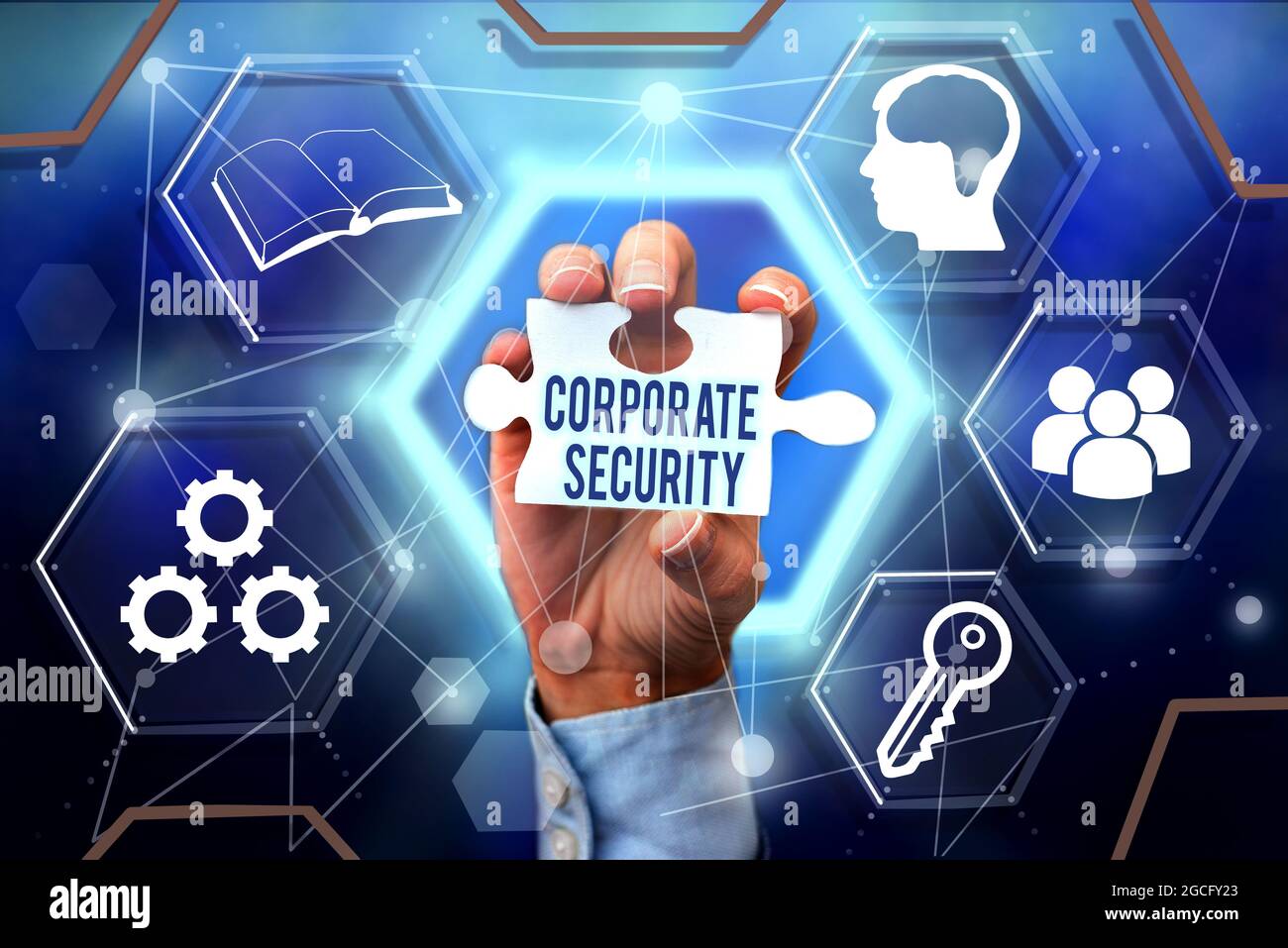Encouraging Your Company with Ironclad Corporate Security Actions
From Cybersecurity to Physical Measures: Enhancing Company Safety And Security in a Transforming Globe
In today's swiftly developing digital landscape, the significance of business safety can not be overstated. As cyber dangers become increasingly advanced and common, organizations need to surpass conventional cybersecurity steps to protect their operations and assets - corporate security. This is where the assimilation of physical safety and security actions ends up being essential. By combining the staminas of both cybersecurity and physical security, business can create a thorough protection technique that deals with the diverse variety of threats they deal with. In this discussion, we will discover the changing danger landscape, the need to integrate cybersecurity and physical safety, the implementation of multi-factor verification actions, the relevance of staff member recognition and training, and the adjustment of security steps for remote labor forces. By taking a look at these crucial locations, we will gain important insights right into just how organizations can reinforce their business security in an ever-changing globe.
Recognizing the Transforming Risk Landscape
The evolving nature of the modern-day world requires an extensive understanding of the transforming threat landscape for effective business security. It is essential for organizations to stay notified and adapt their safety and security determines to address these advancing dangers.
One trick element of comprehending the transforming danger landscape is recognizing the various sorts of dangers that organizations face. Cybercriminals are continuously developing brand-new techniques to exploit vulnerabilities in computer system systems and networks. These threats can vary from malware and ransomware strikes to phishing rip-offs and social engineering strategies. In addition, physical dangers such as theft, vandalism, and company espionage remain prevalent worries for companies.
Monitoring and assessing the risk landscape is essential in order to recognize prospective risks and vulnerabilities. This involves remaining upgraded on the current cybersecurity trends, assessing hazard knowledge reports, and carrying out normal threat analyses. By comprehending the changing threat landscape, organizations can proactively apply appropriate safety measures to mitigate risks and secure their possessions, track record, and stakeholders.
Integrating Cybersecurity and Physical Safety
Integrating cybersecurity and physical safety and security is essential for thorough business protection in today's interconnected and electronic landscape. As companies progressively depend on innovation and interconnected systems, the boundaries between physical and cyber threats are coming to be obscured. To successfully safeguard against these risks, an alternative technique that incorporates both cybersecurity and physical security steps is important.
Cybersecurity concentrates on safeguarding electronic assets, such as information, networks, and systems, from unauthorized gain access to, disturbance, and theft. Physical safety, on the various other hand, encompasses procedures to safeguard physical assets, individuals, and facilities from vulnerabilities and hazards. By integrating these 2 domains, companies can attend to susceptabilities and risks from both digital and physical angles, thereby improving their total security pose.
The integration of these 2 disciplines permits a much more thorough understanding of security dangers and enables a unified feedback to incidents. As an example, physical gain access to controls can be enhanced by incorporating them with cybersecurity procedures, such as two-factor authentication or biometric identification. Cybersecurity actions can be matched by physical safety and security procedures, such as monitoring video cameras, alarms, and safe and secure access points.

Executing Multi-Factor Authentication Steps
As companies increasingly prioritize detailed security measures, one effective approach is the application of multi-factor authentication steps. Multi-factor authentication (MFA) is a protection technique that needs users to offer numerous forms of recognition to access a system or application. This approach includes an extra layer of protection by combining something the customer recognizes, such as a password, with something they have, like a finger print or a security token.
By implementing MFA, companies can substantially enhance their safety and security stance - corporate security. Conventional password-based verification has its limitations, as passwords can be easily compromised or forgotten. MFA read this article reduces these dangers by adding an extra verification aspect, making it harder for unauthorized individuals to get to sensitive info
There are several sorts of multi-factor verification methods offered, including biometric authentication, SMS-based verification codes, and equipment symbols. Organizations need to examine their particular requirements and pick the most suitable MFA remedy for their requirements.
Nevertheless, the application of MFA should be meticulously planned and carried out. It is important to strike a balance between protection and use to avoid user irritation and resistance. Organizations should also think about prospective compatibility concerns and provide adequate training and support to make sure a smooth transition.
Enhancing Staff Member Understanding and Training
To reinforce company safety, companies should focus on boosting employee awareness and training. In today's rapidly evolving threat landscape, workers play a crucial duty in guarding a company's delicate information and possessions. Unfortunately, numerous safety and security violations happen because of human mistake or lack of awareness. Consequently, organizations require to buy detailed training programs to enlighten their employees about prospective threats and the most effective practices for mitigating them.
Effective worker awareness and training programs should cover a wide variety of topics, consisting of information defense, phishing assaults, social engineering, password health, and physical safety and security procedures. These programs ought to be tailored to the certain demands and duties of various staff member functions within the organization. Routine training workshops, sessions, and simulations can assist workers create the needed skills and understanding to respond and determine to safety hazards efficiently.
Additionally, companies need to encourage a culture of safety and security awareness and offer continuous updates and suggestions to maintain employees educated regarding the most recent risks and mitigation strategies. This can be done with internal interaction networks, such as newsletters, intranet websites, and e-mail campaigns. By fostering a security-conscious workforce, organizations can considerably reduce the probability of safety cases and secure their useful assets from unauthorized access or concession.

Adapting Security Actions for Remote Workforce
Adapting look at these guys corporate protection procedures to accommodate a remote workforce is necessary in ensuring the defense of delicate info and properties (corporate security). With the enhancing trend of remote work, organizations need to implement proper safety and security measures to mitigate the risks connected with this new way of working
One critical aspect of adapting protection actions for remote job is developing safe interaction networks. Encrypted messaging platforms and digital private networks (VPNs) can aid safeguard delicate details and stop unapproved gain access to. Furthermore, companies ought to implement the use of solid passwords and multi-factor verification to enhance the protection of remote access.
One more crucial consideration is the application of safe and secure remote accessibility options. This involves giving workers with safe and secure access to business resources and data via digital desktop computer infrastructure (VDI), remote desktop computer protocols (RDP), or cloud-based options. These innovations guarantee that delicate details remains protected while making it possible for employees to execute their duties efficiently.

Lastly, extensive security recognition training is critical for remote staff members. Educating sessions should cover ideal techniques for securely accessing and managing delicate details, determining and reporting phishing efforts, and maintaining the total cybersecurity health.
Conclusion
Finally, as the hazard landscape proceeds to progress, it is vital for organizations to enhance their safety gauges both in the cyber and physical domains. Integrating cybersecurity and physical safety and security, carrying out multi-factor verification procedures, and improving worker understanding and training are essential steps towards accomplishing robust business protection. Additionally, adapting protection procedures to suit remote workforces is crucial in today's changing world. By executing these actions, organizations can reduce risks and safeguard their useful assets from possible hazards.
In look here this conversation, we will certainly explore the altering hazard landscape, the requirement to integrate cybersecurity and physical protection, the execution of multi-factor verification measures, the importance of employee recognition and training, and the adjustment of safety measures for remote workforces. Cybersecurity procedures can be enhanced by physical safety steps, such as security cams, alarms, and safe and secure accessibility points.
As companies increasingly focus on extensive safety steps, one reliable strategy is the application of multi-factor verification actions.In conclusion, as the risk landscape continues to develop, it is important for companies to strengthen their security gauges both in the cyber and physical domains. Integrating cybersecurity and physical safety, carrying out multi-factor verification measures, and boosting worker understanding and training are necessary steps towards accomplishing robust company security.